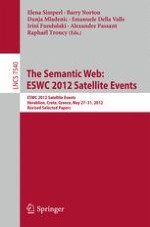2015 | OriginalPaper | Chapter
Linked Data and Linked APIs: Similarities, Differences, and Challenges
Authors : Ruben Verborgh, Thomas Steiner, Rik Van de Walle, Joaquim Gabarro
Published in: The Semantic Web: ESWC 2012 Satellite Events
Publisher: Springer Berlin Heidelberg
Activate our intelligent search to find suitable subject content or patents.
Select sections of text to find matching patents with Artificial Intelligence. powered by
Select sections of text to find additional relevant content using AI-assisted search. powered by
